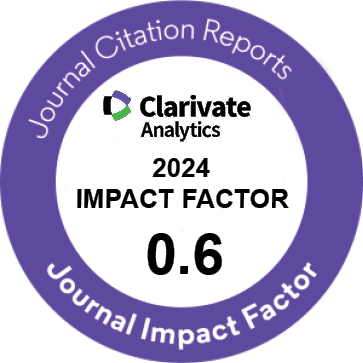| Review | |
| Physiotherapy and Pelvic Floor Muscle Exercises for the Prevention and Treatment of Pregnancy-Related Pelvic Floor Dysfunctions: A Systematic Review and Meta-analysis | |
| Fahime Khorasani1, Fariba Ghaderi1,2, Parvin Sarbakhsh3, Parisa Ahadi2, Elahe Khorasani4, Fereshteh Ansari2, Nafiseh Vahed2 | |
| 1Department of Physiotherapy, Faculty of Rehabilitation, Tabriz University of Medical Sciences, Tabriz, Iran 2Research Center of Evidence Based Medicine, Tabriz University of Medical Sciences, Tabriz, Iran 3Road Traffic Injury Research Center, Tabriz University of Medical Sciences, Tabriz, Iran 4Department of Pharmacoeconomics and Pharmaceutical Administration, School of Pharmacy, Students Scientific Research Center, Tehran University of Medical Sciences, Tehran, Iran |
|
|
IJWHR 2020; 8: 125-132 DOI: 10.15296/ijwhr.2020.20 Viewed : 6772 times Downloaded : 4614 times. Keywords : Physiotherapy, Pelvic floor muscle exercise, Pelvic organ prolapse, Urinary incontinence, Fecal incontinence |
|
| Full Text(PDF) | Related Articles | |
| Abstract | |
Objectives: The present systematic review focused on the prevention or treatment of three main types of pelvic floor dysfunctions (PFDs) specifically pelvic organ prolapse (POP), urinary incontinence (UI), and fecal incontinence (FI) using physiotherapy and pelvic floor muscle exercises (PFMEs). With regard to the breadth of the problem, there is not much evidence grounded on the best management. The main purpose of this systematic review was to evaluate the effects of physiotherapy and PFMEs on the prevention and treatment of pregnancy-related PFDs; namely, POP, FI, and UI. Therefore, this review incorporated studies comparing the use of physiotherapy and PFMEs with every other existing interventions. Methods: This systematic review and meta-analysis was conducted on randomized-controlled-trial (RCT) articles and quasi-RCT designs through a search in the studies published with no time limits until December 2017 in the databases of PubMed (Medline), Web of Science, Scopus, Embase, Cochrane Library, and ProQuest. The meta-analysis was also applied for data synthesis. Moreover, heterogeneity was assessed using Cochran?s Q test and I2 index. Results: A total number of 26 RCTs were examined in this review in which the outcome variables were related to POP, UI, and FI prevalence; POP, UI, and FI severity, as well as pelvic floor muscle (PFM) strength and endurance. In most articles, UI prevalence or severity in intervention groups had significantly improved compared with those in controls. The number of studies examining POP and FI was also relatively low. In two studies, FI severity or prevalence in intervention groups had significantly enhanced in comparison with those in control groups; however, FI prevalence in two articles had been reported lower in intervention groups than that in control groups although no significant difference had been observed. There was also no significant improvement in intervention groups in two other studies in this respect. Besides, three articles had not reported traces of improvement in POP, as well as a significant difference between intervention and control groups. Nevertheless, two studies had found a significant improvement in POP in this regard. Based on meta-analysis results for the variable of PFM strength, Cochran?s Q test (P < 0.001) and I2 index (90.02) indicated heterogeneity between studies; so, a random-effect meta-analysis was applied to estimate overall effect sizes. The overall mean differences following intervention between the study groups were also equal to 6.94, with a 95% CI (1.36 to 12.52). Conclusions: It was concluded that physiotherapy and PFMEs might have effects on pregnancy-related UI, but they had not consistently reduced FI severity or prevalence and failed to constantly improve POP.
Supplementary Materials Supplementary Materials Supplementary Materials |
Cite By, Google Scholar
Google Scholar
PubMed
Online Submission System
 IJWHR ENDNOTE ® Style
IJWHR ENDNOTE ® Style
 Tutorials
Tutorials
 Publication Charge
Women's Reproductive Health Research Center
About Journal
Publication Charge
Women's Reproductive Health Research Center
About Journal
Aras Part Medical International Press Editor-in-Chief
Arash Khaki
Mertihan Kurdoglu Deputy Editor
Zafer Akan























